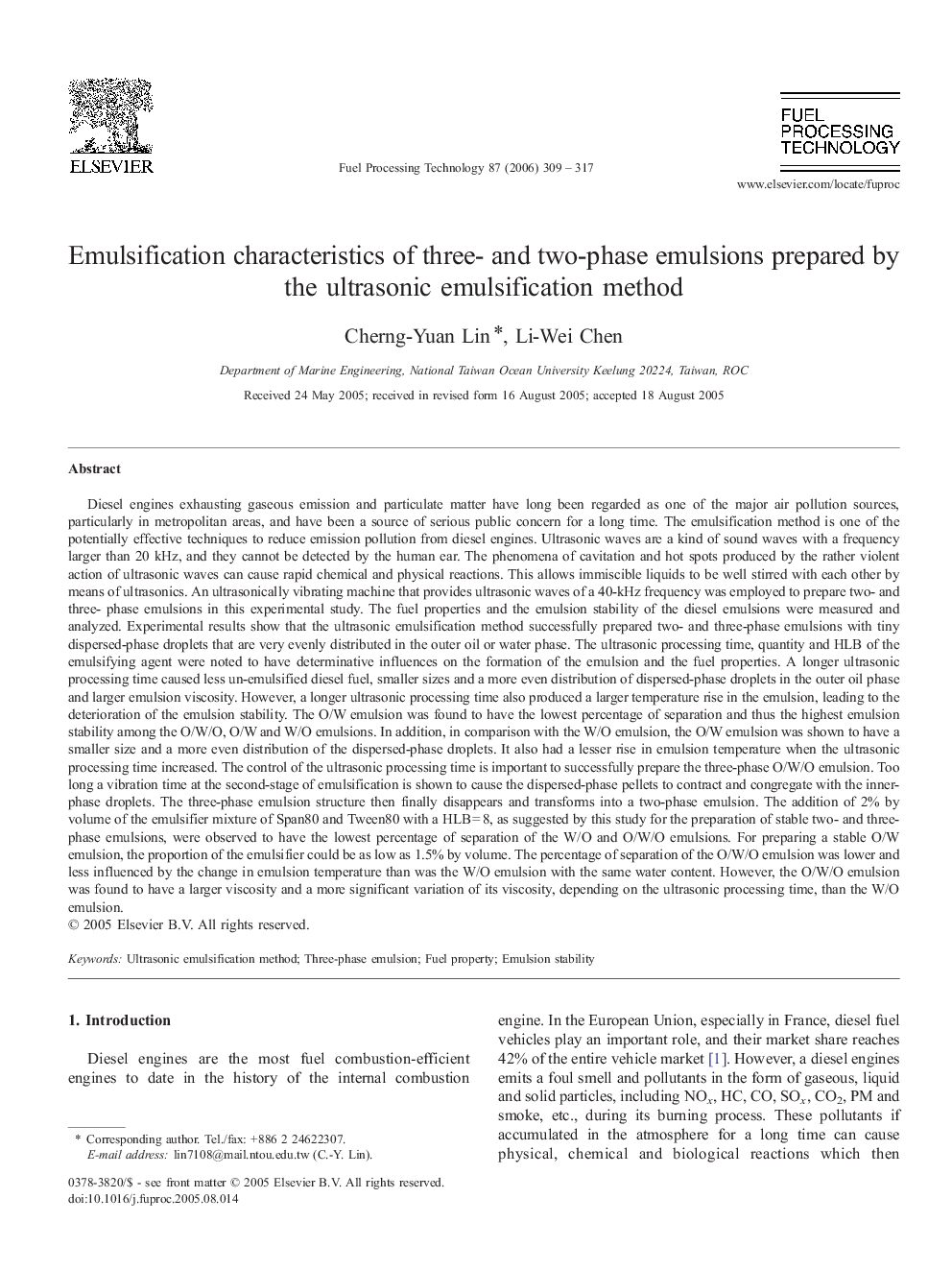| کد مقاله | کد نشریه | سال انتشار | مقاله انگلیسی | نسخه تمام متن |
|---|---|---|---|---|
| 211712 | 461804 | 2006 | 9 صفحه PDF | دانلود رایگان |

Diesel engines exhausting gaseous emission and particulate matter have long been regarded as one of the major air pollution sources, particularly in metropolitan areas, and have been a source of serious public concern for a long time. The emulsification method is one of the potentially effective techniques to reduce emission pollution from diesel engines. Ultrasonic waves are a kind of sound waves with a frequency larger than 20 kHz, and they cannot be detected by the human ear. The phenomena of cavitation and hot spots produced by the rather violent action of ultrasonic waves can cause rapid chemical and physical reactions. This allows immiscible liquids to be well stirred with each other by means of ultrasonics. An ultrasonically vibrating machine that provides ultrasonic waves of a 40-kHz frequency was employed to prepare two- and three- phase emulsions in this experimental study. The fuel properties and the emulsion stability of the diesel emulsions were measured and analyzed. Experimental results show that the ultrasonic emulsification method successfully prepared two- and three-phase emulsions with tiny dispersed-phase droplets that are very evenly distributed in the outer oil or water phase. The ultrasonic processing time, quantity and HLB of the emulsifying agent were noted to have determinative influences on the formation of the emulsion and the fuel properties. A longer ultrasonic processing time caused less un-emulsified diesel fuel, smaller sizes and a more even distribution of dispersed-phase droplets in the outer oil phase and larger emulsion viscosity. However, a longer ultrasonic processing time also produced a larger temperature rise in the emulsion, leading to the deterioration of the emulsion stability. The O/W emulsion was found to have the lowest percentage of separation and thus the highest emulsion stability among the O/W/O, O/W and W/O emulsions. In addition, in comparison with the W/O emulsion, the O/W emulsion was shown to have a smaller size and a more even distribution of the dispersed-phase droplets. It also had a lesser rise in emulsion temperature when the ultrasonic processing time increased. The control of the ultrasonic processing time is important to successfully prepare the three-phase O/W/O emulsion. Too long a vibration time at the second-stage of emulsification is shown to cause the dispersed-phase pellets to contract and congregate with the inner-phase droplets. The three-phase emulsion structure then finally disappears and transforms into a two-phase emulsion. The addition of 2% by volume of the emulsifier mixture of Span80 and Tween80 with a HLB = 8, as suggested by this study for the preparation of stable two- and three-phase emulsions, were observed to have the lowest percentage of separation of the W/O and O/W/O emulsions. For preparing a stable O/W emulsion, the proportion of the emulsifier could be as low as 1.5% by volume. The percentage of separation of the O/W/O emulsion was lower and less influenced by the change in emulsion temperature than was the W/O emulsion with the same water content. However, the O/W/O emulsion was found to have a larger viscosity and a more significant variation of its viscosity, depending on the ultrasonic processing time, than the W/O emulsion.
Journal: Fuel Processing Technology - Volume 87, Issue 4, April 2006, Pages 309–317